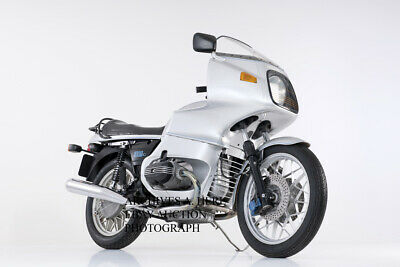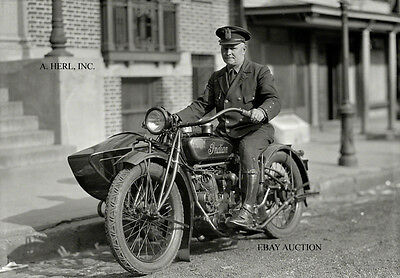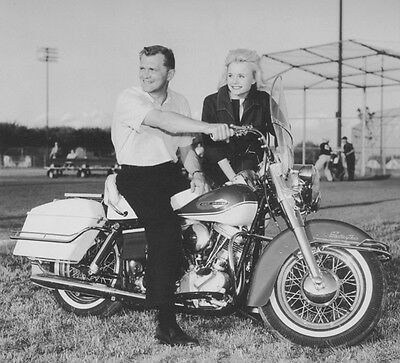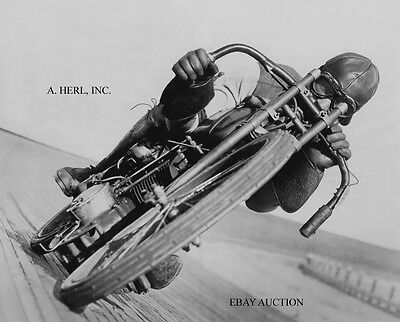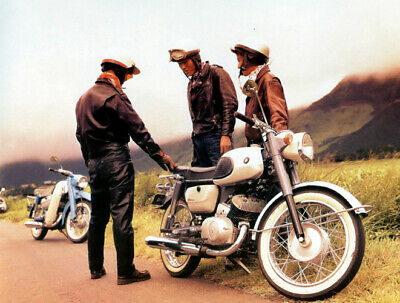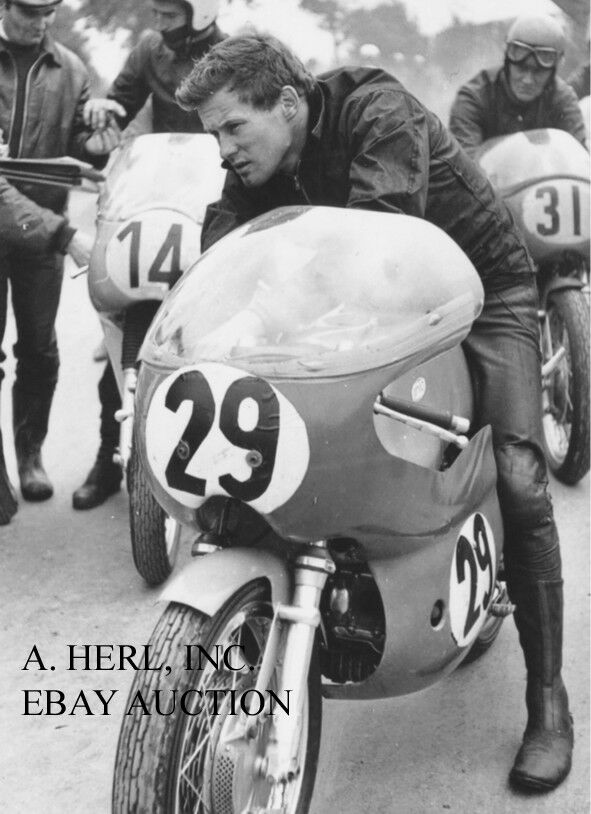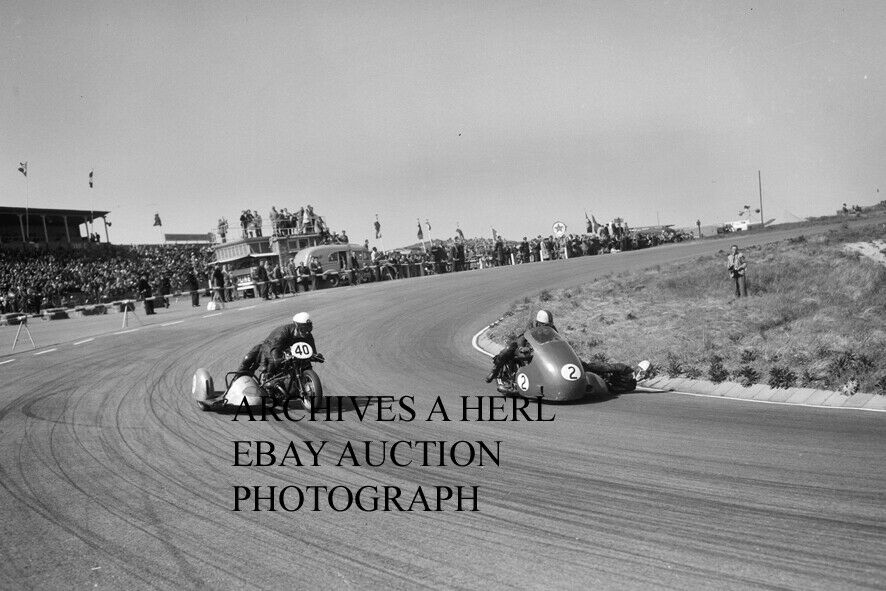-40%
Harley-Davidson Topper Model 60 Series A 1960 publicity campaign motorcycle
$ 5.14
- Description
- Size Guide
Description
A superb and rare photo of the1960 Harley-Davidson Topper Model 60 - Series A
photographed during a publicity shoot in 1960.
It is a lovely image, it was used during the original publicity campaign of the all new 1960 H-D Topper model! That year a total of 3,801 HD Topper bikes were produced.
The
Harley-Davidson Model 60 Topper
was not the only motor scooter that the Harley-Davidson Motor Company ever produced, as they also made the Brezza under the Aermacchi Harley-Davidson name. Nevertheless, the Topper was an American design and made Harley, just like the V-twins. Up front was a simple leading-link fork, and there were small drum brakes on both wheels. Beneath the hinged seat was a large storage space, but if that wasn't enough, a luggage rack was available. Its
Scootaway Drive
—a variable belt transmission—was twist-and-go simple, making the Topper even easier to operate than a Vespa. The front body, front fender and floorboards of the Topper were made of stamped steel, and the engine cover and body were made of chopper gun-sprayed fiberglass. The motor, descended from the 125cc engine Harley received from German DKW as war reparations, wasn’t exactly perfect for a fully enclosed scooter. The two-stroke mill was billed as 10 cubic inches (165cc) and rated
at 9
ponies, but it was cooled only by whatever air could reach it under the seat—there was no fan. Up front was a simple leading-link fork, and there were small drum brakes on both wheels. Beneath the hinged seat was a large storage space, but if that wasn't enough, a luggage rack was available. For those not content with carrying only two people and luggage, a sidecar was offered -- though fully loaded, the rig must have proved agonizingly slow. Other "big bike" accessories included a passenger's backrest and windshield. Harley officials seemed concerned about how their new machine would be received. In magazines, they stressed H-D’s motorcycling history—and its business acumen—as much as the machine itself. Still, there was no shortage of hyperbole. William H. Davidson even predicted: “As our sales campaign gathers momentum, we confidently expect Harley-Davidson to become as prominent in the scooter field as it is in motorcycles.” Alas, that was not to be. Sales lagged, and Toppers lasted just five years in the Harley line. It’s estimated that fewer than 3,000 were sold.
Harley-Davidson
has a long and very interesting history that started as early as in 1901. That year, William S. Harley, age 21, drew up plans for a small engine with a displacement of 7.07 cubic inches (116 cc) and four-inch (
102 mm
) flywheels. The engine was designed for use in a regular pedal-bicycle frame. Over the next two years Harley and his childhood friend Arthur Davidson labored on their motor-bicycle using the northside
Milwaukee
machine shop at the home of their friend, Henry Melk. It was finished in 1903 with the help of Arthur's brother, Walter Davidson. Upon completion the boys found their power-cycle unable to conquer
Milwaukee
's modest hills without pedal assistance. Will Harley and the Davidsons quickly wrote off their first motor-bicycle as a valuable learning experiment. Work immediately began on a new and improved second-generation machine. This first "real" Harley-Davidson motorcycle had a bigger engine of 24.74 cubic inches (405 cc) with 9.75 inches (
25 cm
) flywheels weighing
28 lb
(
13 kg
). The machine's advanced loop-frame pattern was similar to the 1903 Milwaukee Merkel motorcycle (designed by Joseph Merkel, later of Flying Merkel fame). The bigger engine and loop-frame design took it out of the motorized-bicycle category and would help define what a modern motorcycle should contain in the years to come. The boys also received help with their bigger engine from outboard motor pioneer Ole Evinrude, who was then building gas engines of his own design for automotive use on
Milwaukee
's
Lake Street
. The prototype of the new loop-frame Harley-Davidson was assembled in a 10 ft × 15 ft (3.0 m × 4.6 m) shed in the Davidson family backyard. Most of the major parts, however, were made elsewhere, including some probably fabricated at the
West Milwaukee
railshops where oldest brother William A. Davidson was then toolroom foreman. This prototype machine was functional by
September 8, 1904
, when it competed in a
Milwaukee
motorcycle race held at
State
Fair
Park
. It was ridden by Edward Hildebrand and placed fourth. This is the first documented appearance of a Harley-Davidson motorcycle in the historical record. In January 1905, small advertisements were placed in the "Automobile and Cycle Trade Journal" that offered bare Harley-Davidson engines to the do-it-yourself trade. By April, complete motorcycles were in production on a very limited basis. That year the first Harley-Davidson dealer, Carl H. Lang of
Chicago
, sold three bikes from the dozen or so built in the Davidson backyard shed. (Some years later the original shed was taken to the
Juneau Avenue
factory where it would stand for many decades as a tribute to the Motor Company's humble origins. Unfortunately, the first shed was accidentally destroyed by contractors in the early 1970s during a clean-up of the factory yard.) In 1906, Harley and the Davidsons built their first factory on
Chestnut Street
(later
Juneau Avenue
). This location remains the Motor Company's corporate headquarters today. The first
Juneau Avenue
plant was a 40 by 60-foot (
18 m
) single-story wooden structure. That year around 50 motorcycles were produced. In 1907, William S. Harley graduated from the University of Wisconsin–Madison with a degree in mechanical engineering. That year additional factory expansion came with a second floor and later with facings and additions of
Milwaukee
pale yellow ("cream") brick. With the new facilities production increased to 150 motorcycles in 1907. The company was officially incorporated that September. They also began selling their motorcycles to police departments around this time, a market that has been important to them ever since. Production in 1905 and 1906 were all single-cylinder models with 26.84 cubic inches (439.8 cc) engines. In February
1907 a
prototype model with a 45-degree V-Twin engine was displayed at the Chicago Automobile Show. Although shown and advertised, very few V-Twin models were built between 1907 and 1910. These first V-Twins displaced 53.68 cubic inches (879.7 cc) and produced about 7 horsepower (5.2 kW). This gave about double the power of the first singles. Top speed was about
60 mph
(
97 km/h
). Production jumped from 450 motorcycles in 1908 to 1,149 machines in 1909. By 1911, some 150 makes of motorcycles had already been built in the
United States
– although just a handful would survive the 1910s. In 1911, an improved V-Twin model was introduced. The new engine had mechanically operated intake valves, as opposed to the "automatic" intake valves used on earlier V-Twins that opened by engine vacuum. With a displacement of 49.48 cubic inches (810.8 cc), the 1911 V-Twin was smaller than earlier twins, but gave better performance.
This is a very nice and very rare
non period
photo that reflects a wonderful era of HD motorcycle history in a wonderful way. This is your rare chance to own this photo, therefore it is printed in a nice large format of ca. 8" x 10" (ca. 20 x
26 cm
). It makes it perfectly suitable for framing!
Contact us for more H-D and other motorcycle photos of the old and famous American and European motorcycle brands and save on shipping!
Shipping costs will only be $ 7.00 regardless of how many photos you buy. For 5 or more photos, shipping is free!
(Note: A. Herl, Inc. does not appear on photo, for ebay purposes only)
No copyright expressed or implied. Sold as collectable item only. We are clearing out our archives that we have gathered from various sources.
All items always sent well protected in PVC clear files
and board backed envelopes.
We have photographs that came from professional collections and/or were bought from the original photographer or press studio! They are all of professional and excellent quality.
After many decades of professionally collecting photographs and posters we are clearing out our archives. They make the perfect gift and are perfectly suited for framing. They will look gorgeous unframed and will be a true asset nicely framed with a border. They are a gorgeous and great asset in every home, workshop, workplace, restaurant, bar or club!
First come - first served. And you can always contact us for your requests. Please ask any questions before the auction ends.

